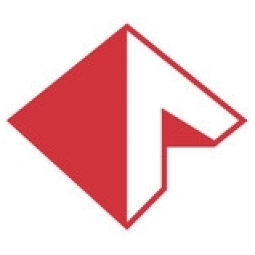公司规模
Mid-size Company
地区
- Europe
国家
- United Kingdom
产品
- Aegis’ FactoryLogix Software
技术栈
- MES (Manufacturing Execution System)
实施规模
- Enterprise-wide Deployment
影响指标
- Productivity Improvements
- Customer Satisfaction
技术
- 应用基础设施与中间件 - 数据交换与集成
适用行业
- 电子产品
适用功能
- 离散制造
- 质量保证
用例
- 自动化制造系统
服务
- 系统集成
- 软件设计与工程服务
关于客户
Connor Solutions is one of the UK’s largest privately owned EMS providers. The company provides world-class manufacturing solutions to customers from the medical and avionics sectors as well as other demanding segments within the electronics manufacturing industry. Connor Solutions is always looking ahead and understands the increasing demands for compliance, control, and traceability that working in these sectors impose. The company's focus is on adopting “Best In Class” digital manufacturing practices to enable significant new business opportunities.
挑战
Connor Solutions, one of the UK’s largest privately owned EMS providers, was facing increasing demands for compliance, control, and traceability in the Medical and Avionics sectors of electronics manufacturing. The company was relying on multiple systems to manage data integrity, which was becoming unsustainable due to the associated costs for increasingly complex operational management. The company decided to move towards a single holistic MES solution that would provide a single source of actionable live data, enabling them to achieve the next level of factory control, automation, visibility, and operational excellence.
解决方案
Connor Solutions selected the Aegis FactoryLogix MES software, which provides values and benefit across all aspects of electronics manufacturing, including advanced engineering, supply-chain, quality, and operational management functionality. The software was integrated with the company's existing Epicor ERP system, providing a unified transition and removing the opportunity for mistakes. The Aegis FactoryLogix software quickly formed a critical part of the live production operation, enhancing other key manufacturing related systems. The software also included the advanced yet simple “inForce” hardware, which was integrated at the start and end of each line throughout the entire manufacturing process.
运营影响
数量效益

Case Study missing?
Start adding your own!
Register with your work email and create a new case study profile for your business.
相关案例.

Case Study
Remote Temperature Monitoring of Perishable Goods Saves Money
RMONI was facing temperature monitoring challenges in a cold chain business. A cold chain must be established and maintained to ensure goods have been properly refrigerated during every step of the process, making temperature monitoring a critical business function. Manual registration practice can be very costly, labor intensive and prone to mistakes.

Case Study
Cloud Solution for Energy Management Platform-Schneider Electric
Schneider Electric required a cloud solution for its energy management platform to manage high computational operations, which were essential for catering to client requirements. As the business involves storage and analysis of huge amounts of data, the company also needed a convenient and scalable storage solution to facilitate operations efficiently.

Case Study
Leveraging the IoT to Gain a Competitive Edge in International Competition
Many large manufacturers in and outside Japan are competing for larger market share in the same space, expecting a growing demand for projectors in the areas of entertainment, which requires glamor and strong visual performance as well as digital signage that can attract people’s attention. “It is becoming more and more difficult to differentiate ourselves with stand-alone hardware products,” says Kazuyuki Kitagawa, Director of Service & Support at Panasonic AVC Networks. “In order for Panasonic to grow market share and overall business, it is essential for us to develop solutions that deliver significant added value.” Panasonic believes projection failure and quality deterioration should never happen. This is what and has driven them to make their projectors IoT-enabled. More specifically, Panasonic has developed a system that collects data from projectors, visualizes detailed operational statuses, and predicts issues and address them before failure occurs. Their projectors are embedded with a variety of sensors that measure power supply, voltage, video input/ output signals, intake/exhaust air temperatures, cooling fan operations, and light bulb operating time. These sensors have been used to make the projector more intelligent, automatically suspending operation when the temperature rises excessively, and automatically switching light bulbs. Although this was a great first step, Panasonic projectors were still not equipped with any capability to send the data over a network.






